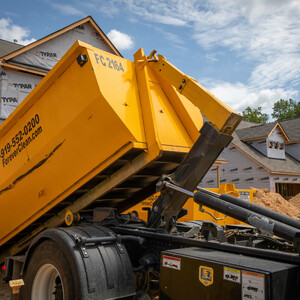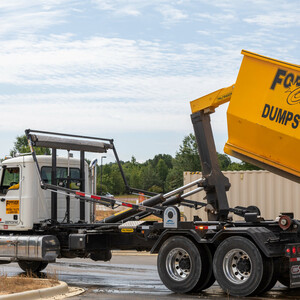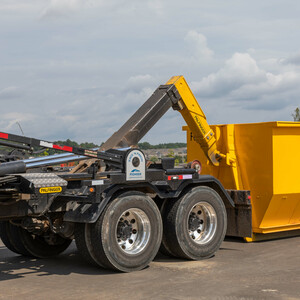
- Home
- News
Why a Hooklift Might Be Right for You
Hooklifts have been around for quite some time but have been much more prevalent in Europe. In North America, the cable hoist has been a much more popular option, but in the past few decades, the hooklift has made its way over the pond, and we see an increased request for hooklifts.
What is a Hooklift? When is it Needed?
A hooklift is a lifting and loading device that helps users transport various materials such as recycling, waste and much more. They are typically hydraulically operated and are mounted to a truck chassis. They also can be quickly interchanged on various truck chassis.
In contrast to the cable hoist, the hooklift allows the driver to complete the loading and lifting process from the comfort of the truck cab. The driver must exit the cab and operate the cable hoist from the side-mounted controls with a cable hoist. The hooklift offers a more convenient, comfortable and faster process allowing the user to complete jobs quicker and safer and therefore take on more work. Not only is a hooklift a great alternative to the cable hoist and a more versatile option than a standard truck with a fixed body. When a user has a fixed body, that truck has only one purpose, while the hooklift is only limited by available truck bodies. In addition, Hooklifts can carry a wide range of objects, allowing fewer vehicles needed to complete jobs.
Benefits of a Hooklift
More Accurate: Allows you to pick up a container at an angle rather than straight on
Increased Safety: As there is no cable on a hooklift, there is an eliminated risk of breakage
Save Money: Smaller trucks do not require a CDL license; therefore, driver cost is reduced
Affordability: Cost of ownership is lower for a single axle truck vs. a tandem axle truck
Important Tips When Purchasing a Hooklift
- Lifting Capacity – Always ensure that the lifting capacity is slightly higher than the legally allowed payload, allowing the ability to carry a heavier load and potentially opening up future opportunities. The lifting capacity of a hooklift is always dependent on the truck chassis height and unit length, so be sure to ask for the lifting capacity charts.
- Installation – As this is a considerable large part of your investment, ensure that a fully bolted mounting concept is selected; this will reduce installation efforts and ensure you receive your hooklift faster.
- In-Cab Control – There are three options for in-cab control systems: hydraulic, pneumatic and electrical. While each may be preferred in different applications, hydraulic is usually the preferred option as faulty operation can lead to massive structural damages costing you significant unplanned expenses. A well-designed control system should prevent the possibility of faulty operation.
- Additional Things to Consider – While this list is just a starting point, some other things to keep in mind are storage options, slide/tilt, fuel efficiency and personalization. The hooklift and chassis you select will need to ensure that you or your drivers have everything they need on hand, helping to reduce their mileage back to the site. In addition, a well-designed hooklift with a low dead weight generates a higher payload for your complete truck.
We have numerous options to fit your needs. Check out our full line of hooklifts that can handle the unique needs of your industry.
*Photos with Forever Clean logo are courtesy of TranSource









